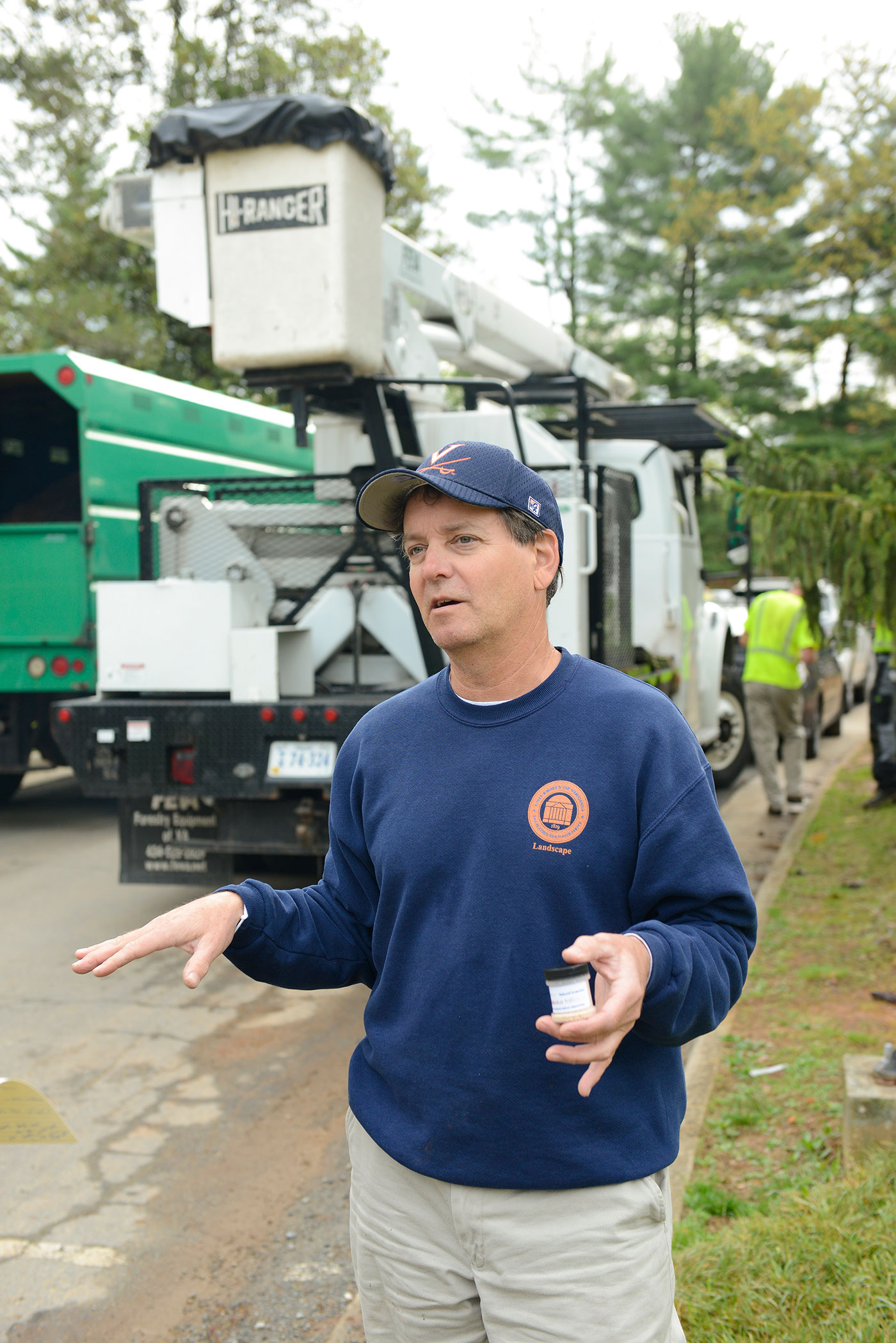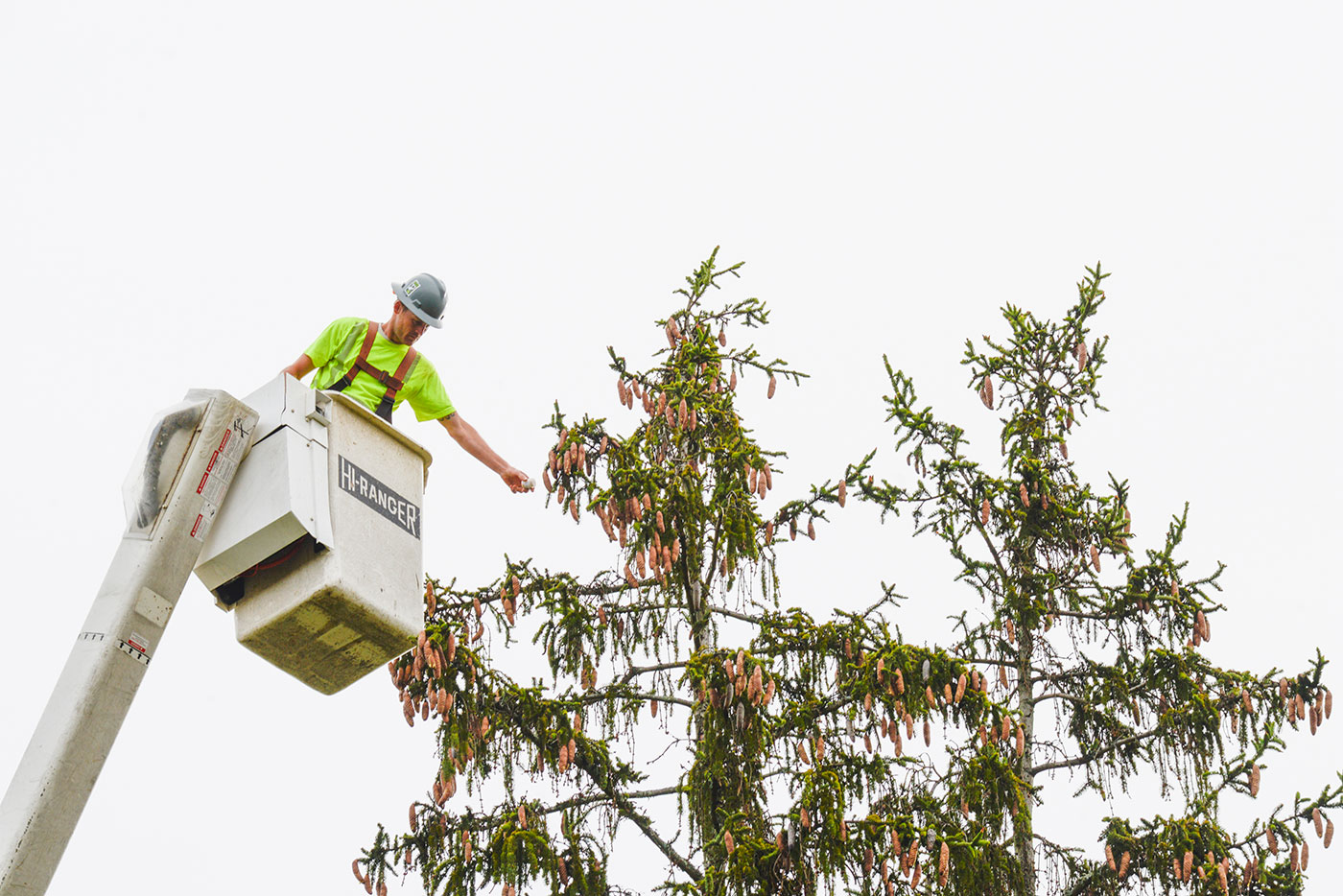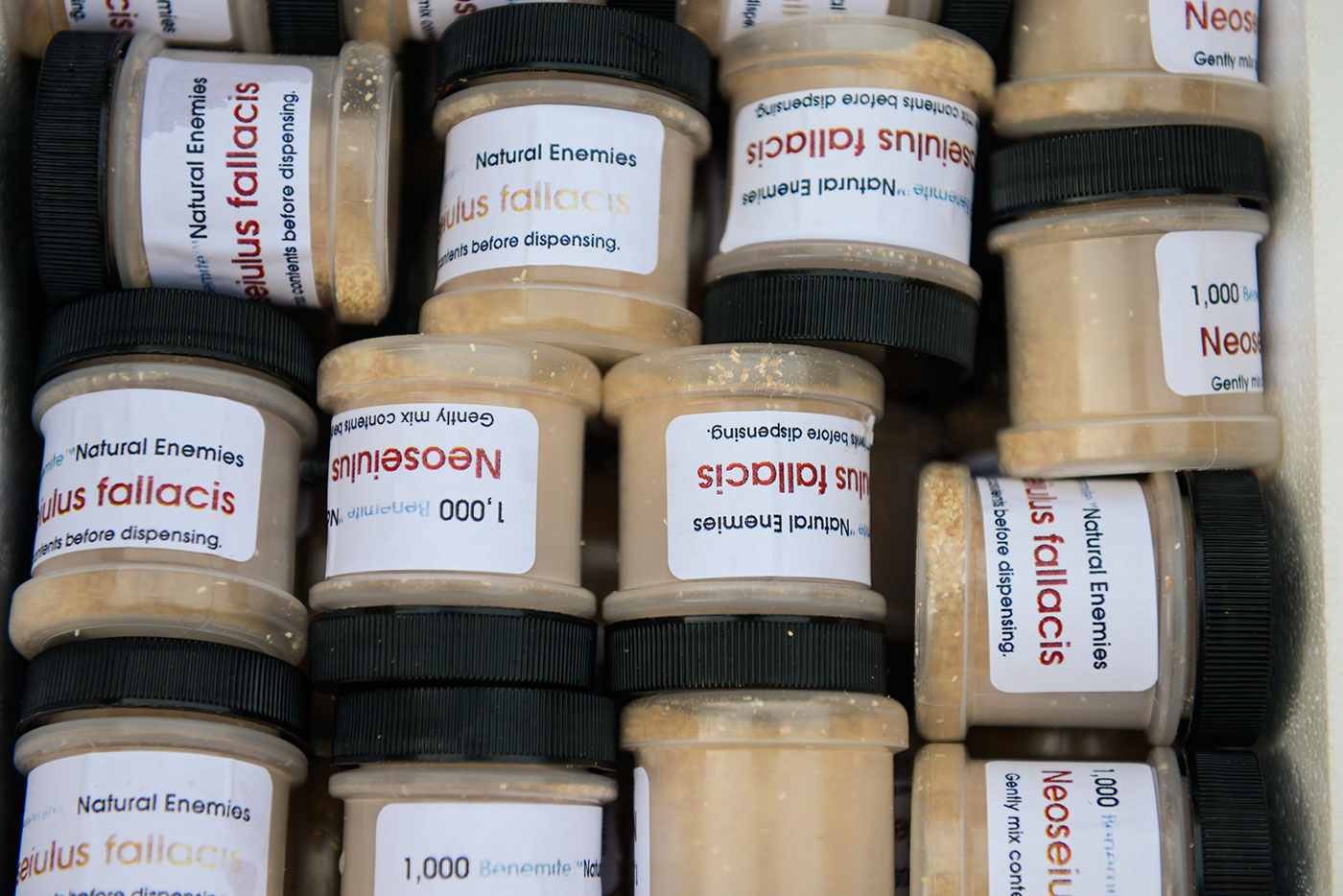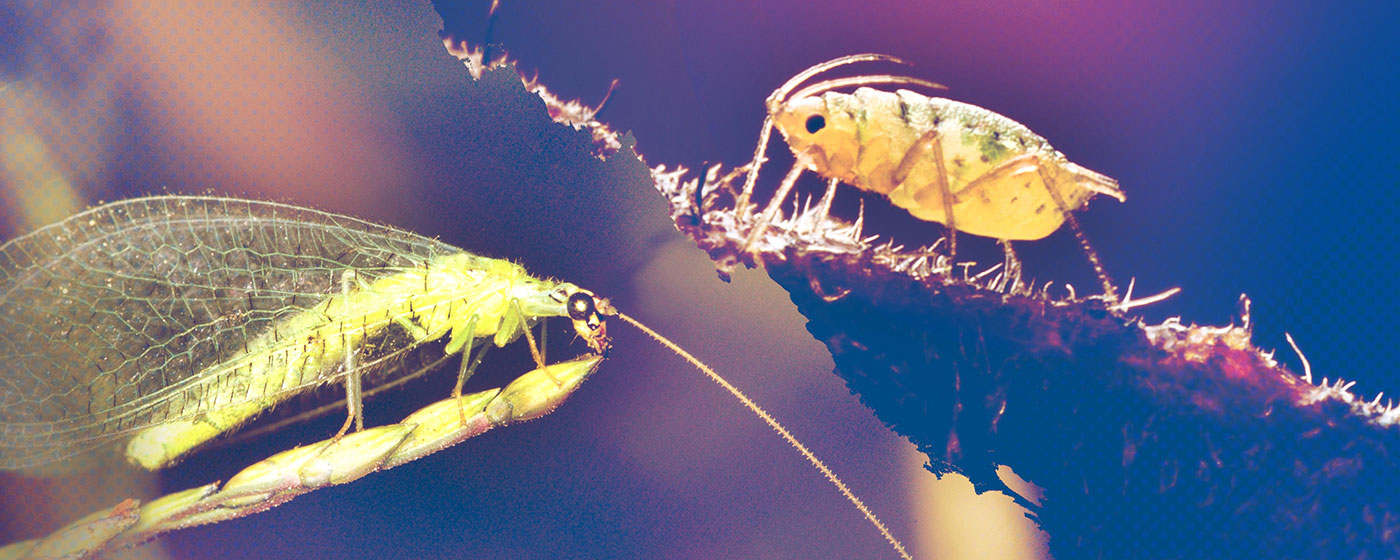They are out there, billions of them, out of sight, armies of predators and prey, each giving no quarter, each doing what nature intended them to do. They are insects.
And the University of Virginia is using them to keep balance and harmony in nature, deploying predatory insects instead of chemicals to control the pest populations.
“We use an integrated pest management approach at the University of Virginia, which means we use the least hazardous methods to achieve our goals,” said Richard Hopkins, landscape supervisor with Facilities Management.
J. Michael Henrietta, a plant health-care specialist with Facilities Management, said the University first brought in microscopic nematodes to combat white grubs in the soil on the lawn in front of Peabody Hall in 2006. He said the area had been completely torn up by the excavations for the Albert and Shirley Small Special Collections Library’s underground facility between Peabody Hall and Alderman Library.
“They brought in fill and they brought in top soil, and the area was almost sterile,” Henrietta said. “The area was sterilized of natural predators, so we introduced some.”

Mike Henrietta, a plant-care specialist with Facilities Management, determines what predator insects are needed to control pests.
Because nematodes are so tiny and fragile, they have to be distributed carefully.
“Nematode Heterohabditis bacteriophora is one we use and they come in a slurry in a foam sponge about the size of a kitchen sponge,” Henrietta said. “About 25 million come in a sponge.”

Because pest outbreaks can be limited to small areas when caught early, the distribution of predatory insects can be limited to specific trees or shrubs.
“We have a 1,000-gallon sprayer and we squeeze the sponge into the sprayer,” Henrietta said. “We have to spray at dusk, so they don’t dry out and die, and then we have to turn on the sprinklers so that they get down into the soil and not stay on the blades of grass.”
Many of the predators Henrietta uses should be introduced into the environment at night.
“A lot of bugs are attracted to the light, so we have to release them at night,” he said.

Many predatory insects may be shipped in small containers.
Not everything with which Henrietta deals is so small. Lady Beetle larvae, which he uses to control aphids on the Linden trees near the Judge Advocate General School on North Grounds, grow from 1/25 of an inch to 3/8 of an inch.
“The larvae are the most effective,” Henrietta said. “I bought a gallon jug of them and that was cool to see a gallon of beetles.”
He also uses lacewings, which can be ½ to ¾ of an inch, to control aphids on the Linden trees.
“The area was sterilized of natural predators, so we introduced some.” – J. Michael Henrietta, Facilities Management
Hopkins said introducing predators does not destroy the pests, but can limit the population. “You never get total eradication,” he said.
Henrietta said that insects have cycles, citing a gypsy moth infestation that swelled several years ago to crisis proportions before they died off.
“The population just crashed,” Henrietta said.
Most predators are applied very locally, on specific trees and shrubs, and do not migrate far.
“Constant scouting is needed to discover pest outbreaks early, as these kind of treatments are most effective on early stages of an outbreak of a pest,” Henrietta said. “Many of the people in the landscape department have a trained eye for pest outbreaks.”
Media Contact
Article Information
April 4, 2016
/content/integrated-pest-management-pits-natural-and-tiny-enemies-against-each-other

